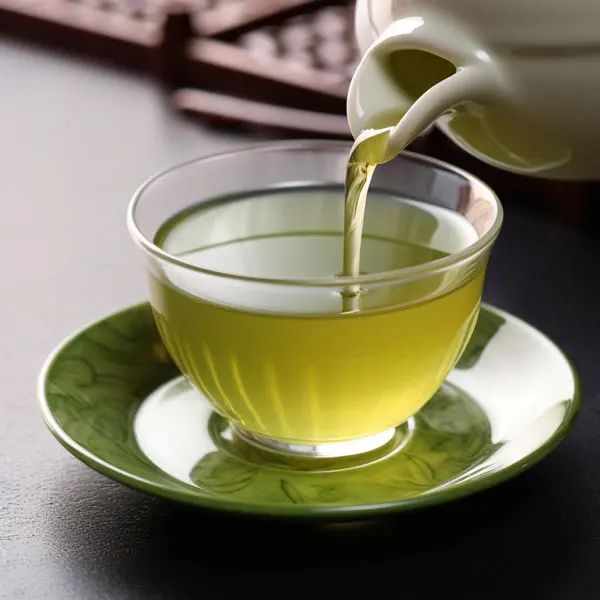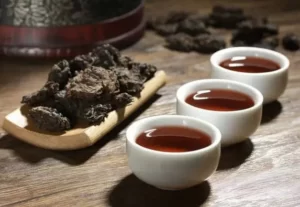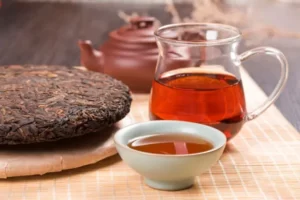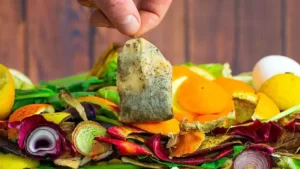Introduction
Acquiring a new Yixing zisha teapot can be an exciting experience. However, before you can use it , you need to prepare it properly. This process is known as “kaihu”. In this article, we will guide you on how to correctly perform kaihu, explain why it’s important, and warn you about common misconceptions and errors.Follow our guide and discover the joy and artistry involved in preparing your Yixing zisha teapot.
When we get a new Yixing zisha teapot, we cannot make a drink directly. It often needs some cleaning and preparation before use, a process we call “kaihu”.
Why Do We Need to Kaihu?
1. Removing Impurities
After being fired in the kilnthe teapot can retain dry gas. There may also be traces of substances like aluminum powder and small particles left inside. Kaihu allows you to clean the teapot, making it safe and ready for use.
2. Nourishing the Teapot
New Yixing Zisha teapots, both inside and out, often have a rough texture and a dull color. Through the process of kaihu, you can nourish the teapot, helping it to achieve a warm, jade-like glow.

How to Season a Yixing Zisha Teapot Correctly?
There is a long history of seasoning teapots.There are many methods for seasoning a Yixing zisha teapot, including boiling it with items like tofu, sugar cane, tea broth, water, or even banana peels, and each seems to make sense. But which is the most effective way?
Here is the most effective and traditional method to season your teapot:
1: Clean the teapot inside and out. Use a soft tea towel to wipe off dust and impurities.

2: Rinse the teapot with warm water. Then fill the pot with boiling water and use the boiling water to rinse the pot’s surface. This step helps to awaken and warm up the teapot.

3: After emptying the water from the teapot, place an appropriate amount of tea leaves inside. Brew the leaves with hot water and let it steep for a considerable period. If you own multiple Yixing teapots, we recommend dedicating each one to a specific type of tea. The unique porous structure of Zisha clay readily absorbs tea flavors, and using different teas in the same pot can cause flavor mixing.

4: Once the tea cools down, clean the teapot again. Now, your teapot is seasoned and ready to use.

Seasoning a Yixing zisha teapot is not just a procedure; it’s also a ritual that helps to cultivate mindfulness and tranquility.
The above is the simple and most correct way to start a new yixing zisha teapot, which even a novice can master this simple process.
Common Mistakes When Seasoning a Yixing Zisha Teapot
While there are several ways to perform kaihu, some methods can be detrimental to your teapot. Here are some practices to avoid:
1. Boiling the purple clay teapot with Tofu
Contrary to popular belief, boiling a teapot with tofu does not get rid of the fire, and its adsorption and decomposition is nonsense. If the pot used to boil the teapot is not clean(A used pot will carry oil unless you use a new pot), the zisah teapot will be ruined.

2. Boiling the zisha teapot with the sugar cane
It is common to say that boiling a teapot with sugar cane may make it more moist rich, but such moist is produced by sugar water infiltration, not by normal use, but will affect the teapot’s maintenance.

The above way of seasoning a teapot will result in the following situation:

why it causes a white residue on the teapot when boiling. The teapots with this problem all have one thing in common, the way they are seasoned is that they are boiled with water, and some add old tofu and sugar cane, etc. The reason for this problem is that the water used to boil the teapot is hard water rich in calcium and magnesium ions, so a layer of white powder material is attached.
How can you identify if your water is hard? It’s quite simple. Just add some soap to your water; if you notice a material precipitating or forming at the bottom, it indicates that the water is hard. If you want to avoid a white residue on your teapot during the seasoning process, avoid boiling it in hard water or with substances like tofu or sugar cane. Always opt for purified water if you need to boil your teapot.
It’s important to note that issues often arise from incorrect seasoning techniques, not from the teapot itself. A low firing temperature or impure clay is seldom the cause of problems. Most issues can be avoided with proper kaihu.
Conclusion
Seasoning a new Yixing zisha teapot is a necessary step that enhances your overall tea-drinking experience. This meticulous process not only prepares your teapot for its first brew but also helps to bring out the unique characteristics of the Yixing zisha clay, allowing for a better taste and aroma in your future brews. In performing these simple steps – brushing away any residual sand or pottery shards, thoroughly washing the teapot, and steeping your choice of tea within it – you imbue your teapot with a personal touch and invite an elevated tea-drinking experience.
Now that you’re equipped with the knowledge and the simple steps to season your Yixing zisha teapot, it’s time to put it into practice. Embrace the ritual, enhance your tea journey, and most importantly, enjoy every sip. Happy brewing!





